What is The Plague, How Could I Get It and How Dangerous is It?
This post may contain affiliate links. Read my full disclosure here.
This post explains what the plague is, identifies global plague “hotspots” and how you can get the plague. It also details three types of plague and symptoms of each type. We also discuss how to reduce your chances of getting the plague, protecting your pets and modern and historical plague remedies.
Table of contents
- What is the plague?
- How could I get the plague?
- Three Types of Plague
- How to survive a plague?
- Reducing your chance of getting the plague
- Protecting your pets will protect you and your family.
- Historical Herbal Cures for The Plague
- Facts About the Plague
- Posts you may find useful:
- Reference Links
- Related Articles
What is the plague?
The plague or “Black Death” or “Black Plague” ravaged Europe from roughly 1347 to 1351 and into the 1700’s, and is still around today. What caused the black plague? Most likely the black plague was caused by Yersinia pestis bacteria. The Yersinia pestis bacterium affects mammals and humans and is carried primarily by fleas. What was the black plague exactly? It was most likely one or more of the three different types of plague (see below). Modern antibiotics, in most cases, can cure the plague if caught early.
Although the plague is very dangerous, thankfully the risk of infection is low.
The likelihood of:
- Dying in a car accident 1 in 645
- Dying of the flu (influenza) 1 in 6000
- Being struck by lightning is 1 in 700,000.
- Getting the plague is 1 in 3,000,000 – depending on where you live.
The World Health Organization reports that from 2010 to 2015 there were 3248 total cases worldwide, including 584 deaths.
The Democratic Republic of the Congo, Madagascar, and Peru have the highest number of plague cases between 2010-2015. In the USA, the most outbreaks have occurred in the southwest in California, Colorado, New Mexico, and Arizona.
How could I get the plague?
People associate the plague with rats. However, the fleas on the rats are the problem. Your 4 main sources are:
- The bite of infected fleas.
- Unprotected contact with blood, organs, body fluids or other contaminated materials.
- Breathing in airborne particles from the cough of an infected human or animal; especially sick cats.
- Touching or skinning infected animals such as: prairie dogs, squirrels, rats, and rabbits.
A lab test of a sample of pus from a bubo (a swollen, inflamed lymph node in the armpit or groin), blood or sputum is needed to confirm diagnosis of plague, and what type it is.
Three Types of Plague
There are three main types of plague: Bubonic, Septicemic and Pneumonic. Pneumonic is most dangerous, as it can be passed person to person. The following information is sourced from, and attributed to, the WHO (World Health Organization) and CDC (Centers for Disease Control)
Bubonic plague
- Onset of symptoms: one to six days after the bite of a flea
- Bubonic Plague Symptoms include painful lymph nodes usually in the groin, armpit or neck. Other symptoms include: sudden fever and chills, headache, fatigue/extreme exhaustion & muscle aches. In later stages of the infection, buboes (sores) appear near the lymph nodes. The key identification of the bubonic form are swollen lymph nodes.
- If not treated early, the bacteria can spread to other parts of the body and cause septicemic or pneumonic infections.
- It is 30% to 60% fatal if not treated.
Septicemic plague
- Onset of symptoms: very rapid, sometimes in ONE day.
- Septicemic Plague Symptoms include very rapid onset of fever and chills; abdominal pain; diarrhea; vomiting; extreme fatigue and light-headedness; bleeding from mouth, nose, rectum, under skin; shock; gangrene (blackening, tissue death) in fingers, toes and nose.
- It occurs when plague bacteria multiply in the bloodstream. The Septicemic form of plague can quickly cause shock and organ failure.
- It is 95% to 99% fatal if not treated within roughly 24 hours of onset per WHO and CDC.
Pneumonic plague
- Onset of symptoms: three to seven days of exposure.
- Pneumonic Plague Symptoms include chills, difficulty breathing, high fever, bloody cough and mucus, nausea, vomiting, headache, extreme weakness. It affects the lungs, is the most dangerous type and is easily spread person-to-person through cough droplets.
- This form is 95% to 99% fatal if not treated.
How to survive a plague?
If you or a loved one develops symptoms of any form of plague, seek professional health care immediately. Plague can be successfully treated with antibiotics, but an infected person must be treated promptly to avoid serious complications or death. Early diagnosis and early treatment can save lives. If you suspect anyone is infected, wear a mask and gloves.
Reducing your chance of getting the plague
Watch the news for outbreak information. Follow instructions from health professionals and officials. Watch for reports of large numbers of rodents dying. Historically, plague spreads in an area after large numbers of susceptible rodents died. The fleas pass the disease from the dead animals to other mammals and humans. In southwestern U.S. it is more likely to occur during cooler summers that follow wet winters.
Would you like to save this?
More ways to protect yourself from the plague
- Be careful with pets and animals. Don’t let pets sleep with you.
- Avoid traveling to areas that are more likely to have the plague.
- Avoid interaction with people who may be infected. If you must interact with them, wear a mask and gloves when interacting with people who may be infected.
- Eliminate nesting places for rodents such as sheds, garages or rock piles, brush, trash and excess firewood. For more information on rodent control see: The Best Ways to get rid of mice in your home and garage
- Avoid picking up or touching dead animals. Wear gloves and a mask if you must handle sick or dead animals. Report sick or dead animals to the local health department or law enforcement officials.
- Use insect repellent to prevent flea bites. Shower or bathe regularly to avoid flea infestation. Keep clothing and bedding clean to avoid flea infestation.
- Isolate people with symptoms to avoid infecting others via air droplets. Providing masks for pneumonic patients and caregivers can reduce the spread of the bacteria.
Protecting your pets will protect you and your family.
- Treat dogs and cats for fleas regularly.
- Keep pet food in rodent-proof containers.
- Take sick pets to the veterinarian promptly.
- Do not allow pets to hunt or roam in rodent habitat, such as prairie dog colonies.
- Control mice, rats and other rodents.
Historical Herbal Cures for The Plague
Numerous methods were used to try to protect from plague. This information is provided as historical reference only, and is not intended to diagnose or treat any illness. Anything strong enough to use as medicine may have side effects, including herbs. Consult your medical professional before using herbal remedies especially if you are nursing, pregnant or on prescription medication.
Garlic has been used medicinally around the world for tens of thousands of years. During outbreaks, gravediggers drank wine containing crushed garlic and ate large quantities of fresh crushed garlic to ward off the plague. Even though garlic does not provide magical protection, the disease-fighting power of garlic has been repeatedly tested true in thousands of studies.
Garlic contains natural antioxidants, anti-fungal, anti-viral, antibiotic and antimicrobial properties and is known to kill numerous disease-causing bacteria.
Margosa a native to India, has anti-viral, anti-septic, and anti-bacterial properties. A common use includes using the leaves and branches in bath water for patients suffering from chicken pox symptoms.
Oregano has anti-bacterial, anti-viral, and anti-fungal properties.
Yarrow is anti-inflammatory
Ginger has anti-bacterial properties
Thieves Vinegar was used and consumed regularly to purportedly protect from plague. There are many variations of thieves vinegar. Common ingredients include: garlic, lavender, rosemary, thyme, yarrow and sage. Learn how to make Thieves Vinegar here.
Facts About the Plague
This info-graphic from the World Health Organization summarizes basic plague information.

Posts you may find useful:
Reference Links
World Health Organization Plague Information
- http://www.who.int/csr/disease/plague/Plague-February-2017.jpg
- http://www.who.int/csr/resources/publications/plague/CSR_ISR_2000_1/en/
- http://www.who.int/mediacentre/factsheets/fs267/en/
CDC Plague Information
- https://www.cdc.gov/plague/index.html
- CDC Protect Yourself from Plague: https://www.cdc.gov/plague/resources/235098_plaguefactsheet_508.pdf
NOTICE: This post is informational only and is not intended to replace, supplement or complement the care of a medical professional. Seek assistance from medical professionals for all medical conditions.
Related Articles
- Herbal Antibiotics – 15 Natural Infection Fighters
- Natural Remedies for Colds and Flu
- All Natural Health Articles
- Bird Flu Busters – 5 Strategies for a Healthier Flock
- Flu Prevention and Treatment – 10 Quick Tips, Old and New

This post was written by August Neverman IV. August has a strong background in emergency preparedness. He served on several emergency preparedness teams during his tenure at Brown County WI Government, the Medical College of Wisconsin, HSHS, a 13-hospital system and emergency response training during his time with the Air Force and Air National Guard. Learn more about August.

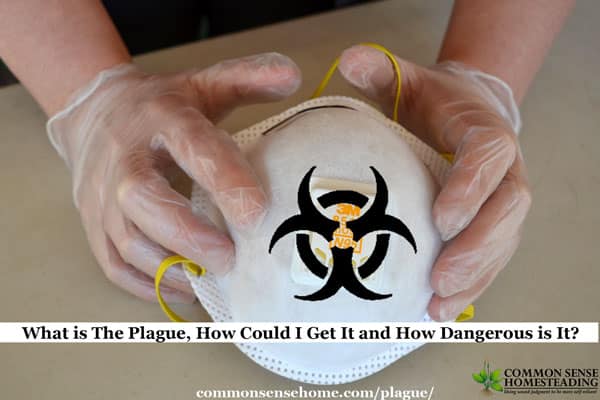
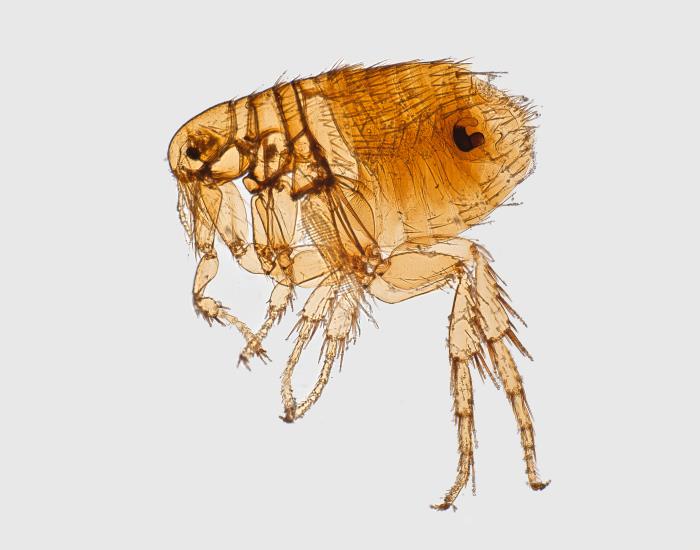
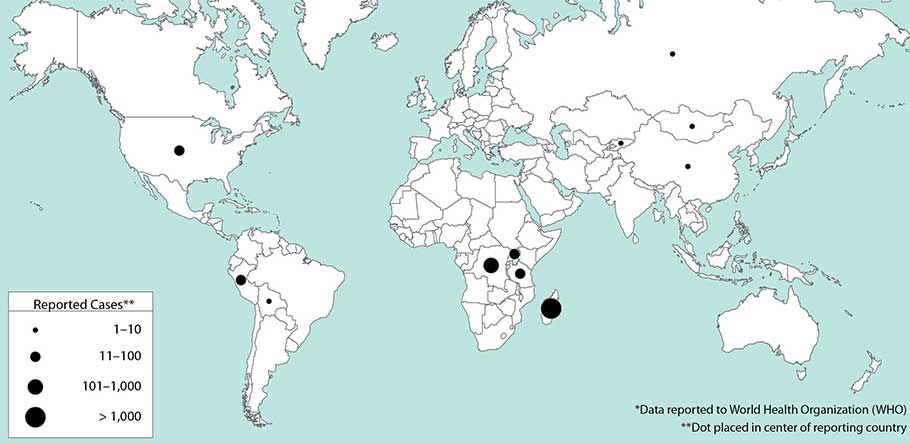

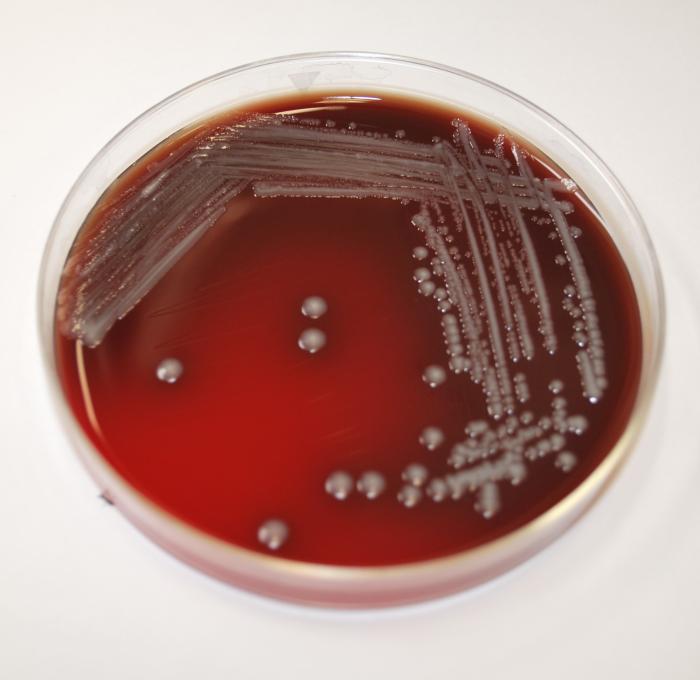
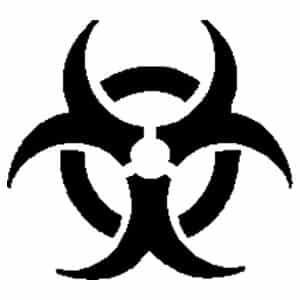
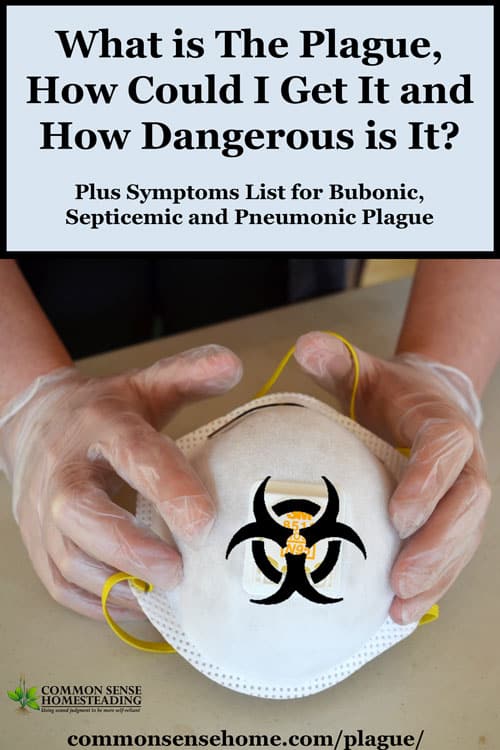
In the USA, plague along with rabies & tulerimia (rabbit fever) are in resevoirs of wild mammals, (eg rodents, squirrels, wild rabbits, etc,) due to infection with contaminated fleas & ticks. It is especially so in the Western US from the coast to the Rocky Mtns, & in the SW deserts… but nearly any area that has fleas or ticks could be at risk for these disease or others (eg Lyme).
Best thing is to be aware of what infections might be in area wildlife & watch pets, children & other vulnerable adults for signs of flea or tick bites, after every outdoor trip, even to the back yard…
The likelihood of catching anything is pretty remote, but not entirely unknown…